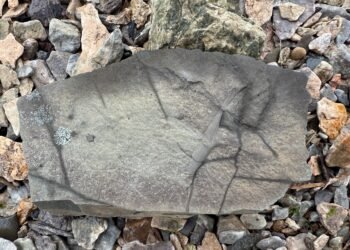Mount Washington NH, the highest peak in New England, is a place of extremes – from its rugged trails and ancient geology to its record-breaking winds and unpredictable weather. Hiking to its summit was an unforgettable journey, blending physical endurance with a deep appreciation for the mountain’s unique climate, history, and connection to the Appalachian Trail. Along the way, I discovered not only the beauty of this iconic peak but also the profound stories it holds – stories etched into its rocks, whispered by its winds, and celebrated by those who dare to climb it.
1 Introduction: A Summit of Legends, Challenges, and Endless Horizons
Mount Washington NH, standing at 6,288 feet (1,917 meters) in the heart of New Hampshire’s White Mountains, is much more than the tallest peak in New England. It’s a mountain of superlatives: home to the “World’s Worst Weather,” the site of a record-breaking wind speed of 231 mph, and a critical waypoint along the storied Appalachian Trail. Its summit isn’t just a geographical high point – it’s a symbol of resilience, exploration, and humanity’s ongoing relationship with the natural world.
For centuries, Mount Washington NH, has captivated adventurers, scientists, and nature enthusiasts. Its rugged peaks, shaped by ancient geological forces and glacial sculpting, tell a story millions of years in the making. Meanwhile, its extreme weather has made it a hub for meteorological research, as well as a proving ground for hikers daring enough to take on its steep trails and unpredictable conditions.
For me, this Labour Day weekend in September marked a personal milestone: my first attempt at hiking to the summit. Having previously driven up the mountain’s iconic Auto Road, I longed for a more immersive experience – one where every step brought me closer to its mysteries and majesty. My chosen route, the Tuckerman Ravine Trail, is as beautiful as it is demanding, offering sweeping views, geological marvels, and a chance to walk the same paths traversed by Appalachian Trail thru-hikers – a journey I also experienced when climbing Mount Katahdin, the trail’s northern terminus.

Mount Washington’s allure lies in its contrasts. It’s a place where modern conveniences, like the Mount Washington Cog Railway, meet ancient landscapes; where serene beauty coexists with the raw power of hurricane-force winds and frigid wind chills. It’s a mountain that demands preparation, respect, and a willingness to embrace the unknown.
This is the story of my ascent – a journey through time, science, and the enduring allure of one of New England’s most iconic peaks.
2 Quick Facts About Mount Washington NH
- Elevation: 6,288 feet (1,917 meters) – the highest peak in New England.
- Location: White Mountains, New Hampshire, USA.
- Geological Age: Over 400 million years old, formed by tectonic uplift and glacial sculpting.
- Climate Nickname: “Home of the World’s Worst Weather.”
- Wind Record: 231 mph (372 km/h), recorded on April 12, 1934 – the highest wind speed observed on Earth until 1996.
- Average Annual Snowfall: Over 280 inches (711 cm).
- Summit Features:
- Mount Washington Observatory: A weather research facility and visitor center.
- Auto Road: Opened in 1861, it’s one of the oldest man-made mountain roads in the U.S.
- Cog Railway: The world’s first mountain-climbing railway, operational since 1869.
- Unique Ecosystem: Home to alpine tundra vegetation, typically found in Arctic regions.
- Fatalities: Over 150 recorded deaths since the mid-19th century, a solemn reminder of its unpredictable and dangerous conditions.
- Auto Road Toll: Driving to the summit costs about $45 for a car and driver, plus $20 per adult passenger (discounts for children; prices vary slightly each year).
- Hiker Shuttle: One-way shuttle rides either way are $60 per person ($75 after 4:00pm descent if busy). Hours 8:30am – 4:00pm. Popular with hikers who choose to hike up and ride down.
3 Preparation: The Calm Before the Storm
My journey began in North Conway, a charming village nestled in New Hampshire’s White Mountains. Its proximity to the trailhead and its abundance of amenities made it the perfect basecamp. The night before the hike, I indulged in my usual pre-adventure ritual: a trip to the local grocery store. Four liters of water, a sandwich, snacks, and winter gear – toque, gloves, and a down jacket – filled my pack. Mount Washington’s unpredictable weather is infamous, and I knew better than to underestimate it.
With everything prepared, I set my alarm for an early start. The excitement of the unknown kept sleep at bay, but by 8:15 am, I was standing at the Tuckerman Ravine Trailhead, ready to tackle the mountain.
4 The Ascent: Step by Step Into the Clouds
The first stretch of the Tuckerman Ravine Trail lulls hikers into a sense of ease. The path winds gently through a lush forest, with the sounds of birds and distant water providing a tranquil soundtrack. As I walked, I found myself in the company of fellow hikers – some seasoned mountaineers, others testing their limits for the first time. The camaraderie on the trail was palpable, a shared determination binding us all.

But Mount Washington NH doesn’t stay gentle for long. After about two hours, the forest began to thin, and the terrain turned rugged. The trail steepened sharply, revealing the mountain’s infamous rock face. Here, the climb became as much about strategy as endurance. Each step required focus as I navigated narrow paths and boulders. The granite underfoot was a testament to the mountain’s ancient geological history, shaped millions of years ago by powerful tectonic forces and glacial sculpting.
Above the tree line, the landscape transformed into an open expanse of rock and sky. The views of the White Mountains were mesmerizing, their rolling peaks fading into a blue haze. It was impossible not to pause and take it all in. These moments of wonder balanced the physical demands of the climb, reminding me why I had chosen to hike rather than drive.

5 Reaching the Summit: Where Beauty Meets Chaos
At 12:46 pm, after four and a half hours of steady climbing, I reached the summit of Mount Washington NH. The sense of triumph was immense, but the summit revealed a surprising juxtaposition of natural grandeur and human activity. Cars filled the parking lot, families milled about with cameras in hand, and the rhythmic clatter of the Mount Washington Cog Railway echoed as another train arrived at its lofty destination.
Yet, despite the bustle, the raw beauty of the mountain prevailed. The granite-strewn summit, shaped by tectonic forces and glaciers over millions of years, bore witness to nature’s immense power and patience. The rock beneath my feet was over 400 million years old, a fragment of Earth’s deep history exposed to the elements. The summit’s rugged terrain reminded me that long before the human story began, Mount Washington was already a towering sentinel in the White Mountains.
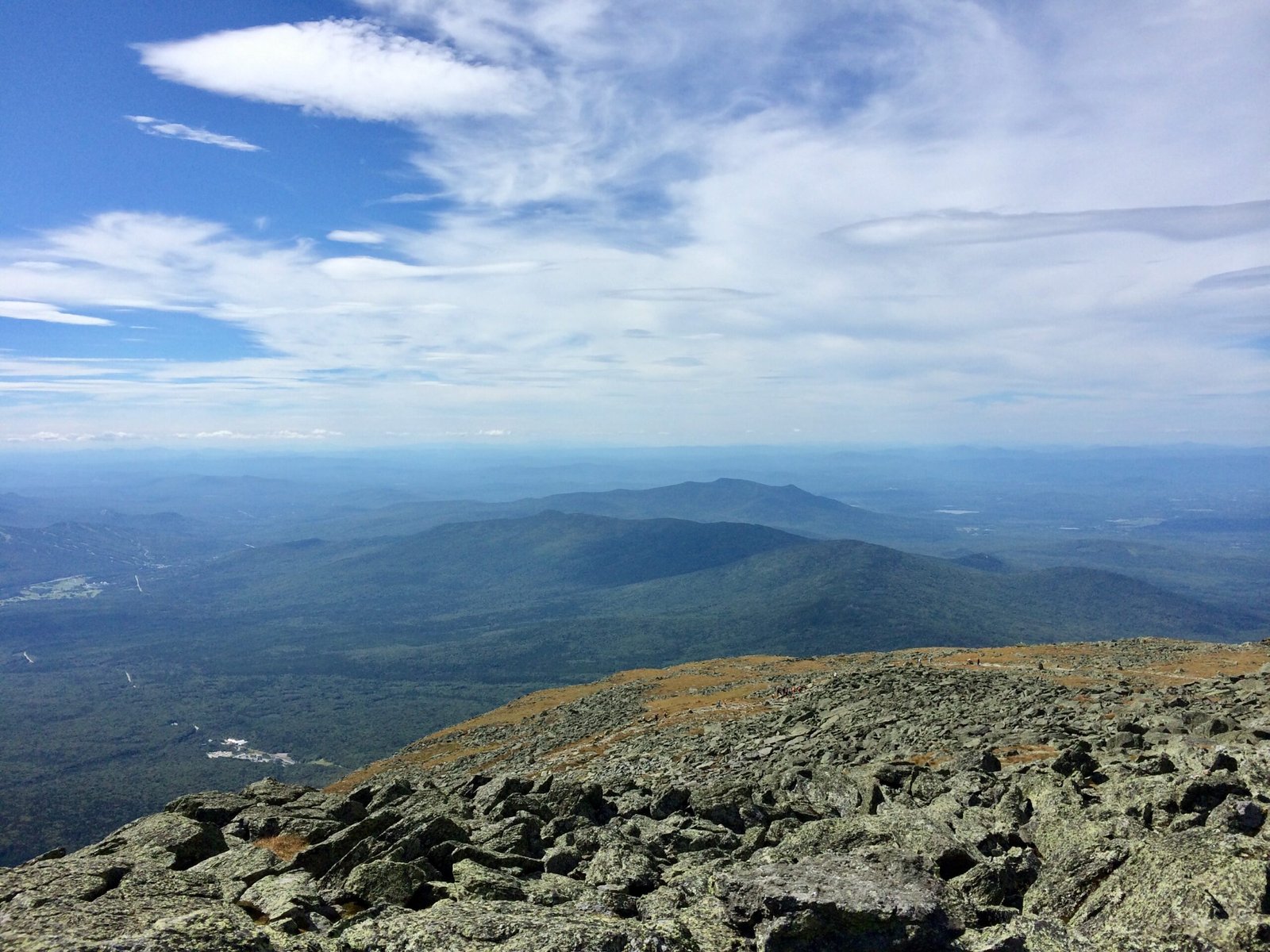
The mountain’s climate, however, is what sets it apart. Mount Washington’s reputation as the “Home of the World’s Worst Weather” is well-earned. Its location at the convergence of three major storm tracks — the Atlantic Ocean, the Great Lakes, and Arctic air masses – creates a cauldron of meteorological extremes. On April 12, 1934, winds here reached 231 mph, a record that stood for decades. Even on a calm day, temperatures can plummet with shocking speed, with wind chills frequently reaching dangerous levels, especially in winter.
“Mount Washington isn’t just a mountain; it’s a living testament to the forces that shape our planet and the resilience of those who seek to understand it.”
When I visited, the weather was uncharacteristically mild – a warm 18°C (64°F) under a bright sun. Yet, patches of melting ice still clung to railings and rocky outcrops, a reminder of the mountain’s ability to turn fierce at a moment’s notice. The Mount Washington Observatory, perched at the summit, serves as a hub for studying these extreme conditions. Its sturdy, cable-secured structure has withstood hurricane-force winds, thick ice, and unrelenting storms. Inside, exhibits explained the science of the mountain’s unique climate, offering visitors insight into the forces that make this peak so extraordinary.
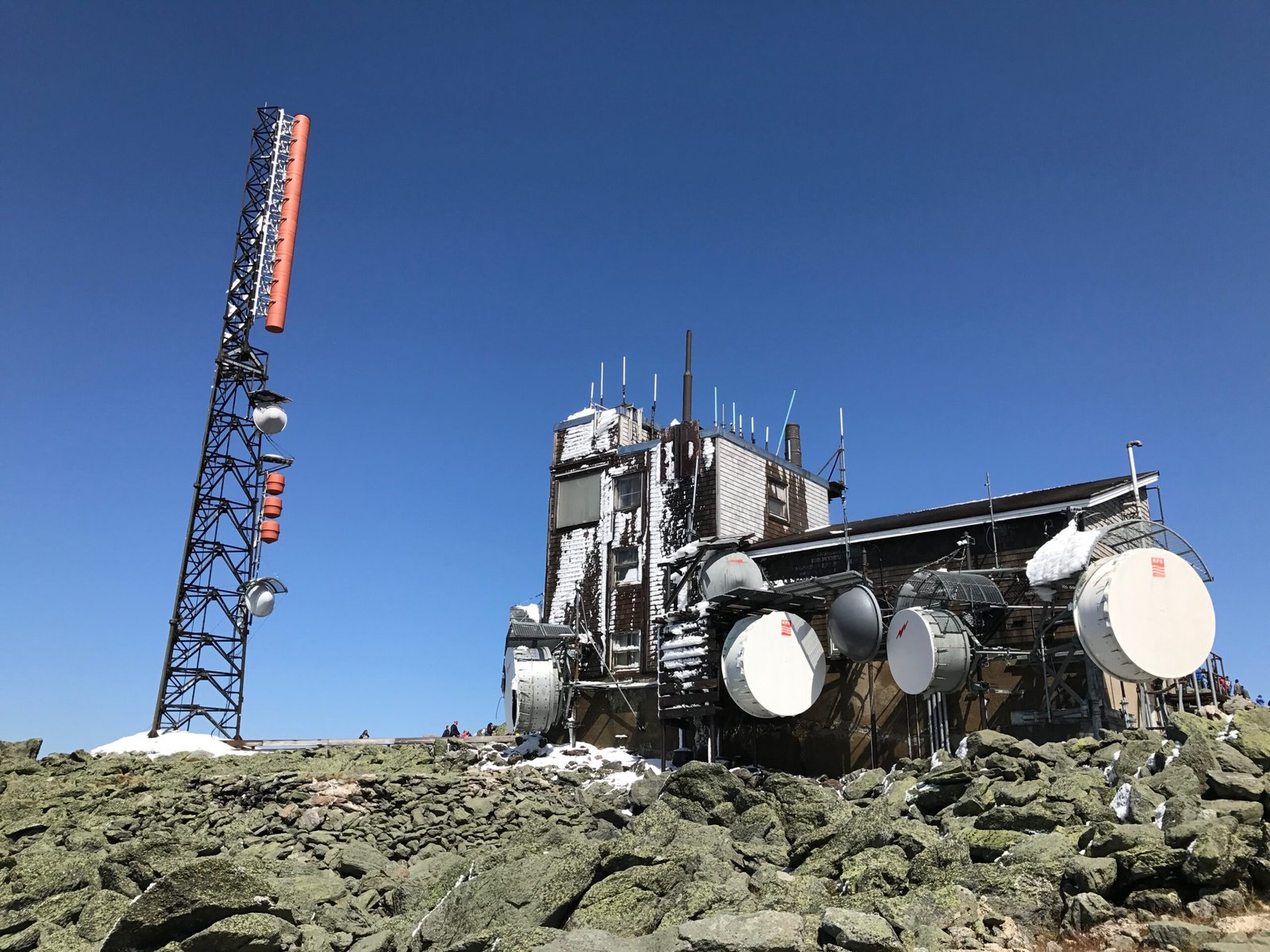
But Mount Washington is more than its geology and weather – it’s also a waypoint on the iconic Appalachian Trail (AT). For thru-hikers traversing the 2,190-mile trail from Georgia to Maine, reaching the summit of Mount Washington is a defining moment. The trail winds through the Presidential Range, exposing hikers to some of the most challenging and scenic terrain of the entire AT. Standing on the summit, I imagined those hikers arriving here after months on the trail, their journey intersecting briefly with mine.
As I wandered the summit, I marvelled at the interplay of forces – natural, human, and historical – that make Mount Washington such a unique place. Here, where geology meets meteorology and ancient paths cross with modern ones, the mountain tells a story of endurance, resilience, and connection.
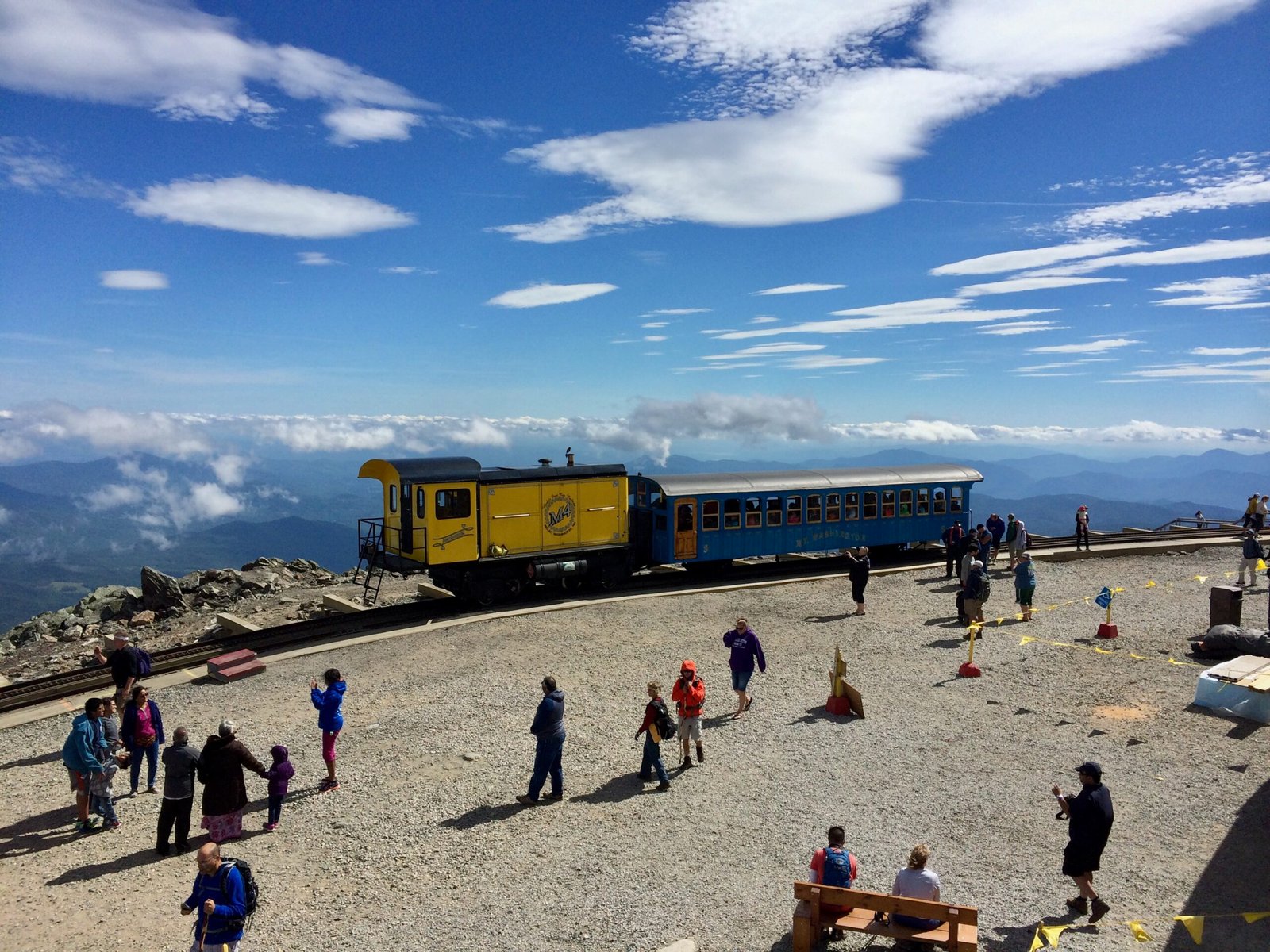
6 Cog Railway: A Timeless Ride to the Summit
For those less inclined to hike, the Mount Washington Cog Railway offers a one-of-a-kind journey to the summit. Operating since 1869, this historic railway is not only an engineering marvel but also a scenic adventure. The train ascends the mountain on a narrow track, providing passengers with panoramic views of the White Mountains and an up-close look at the rugged terrain. The experience combines comfort and nostalgia, allowing visitors to reach the summit without breaking a sweat – though they may still feel the chill of the high-altitude air upon arrival.
7 The Descent: A Ride Through Beauty and History
After an hour spent soaking in the views, wandering the summit, and reflecting on the experience, it was time to head back down. Instead of retracing my steps on the trail, I opted for the shuttle bus. The ride down the mountain offered a different perspective, with the winding Auto Road cutting through stunning vistas and steep drop-offs. The driver shared anecdotes about the road’s history, adding a touch of storytelling to the descent.
Built in 1861, the Mount Washington Auto Road is an engineering marvel, designed to open the summit to visitors of all abilities. In those early days, it was traversed by horse-drawn carriages, a far cry from today’s steady stream of cars, motorbikes, and bicycles. As we descended, I couldn’t help but admire the persistence of those who made this road a reality, carving a path through some of the most rugged terrain in the region.
While the ride lacked the physical challenge of hiking, it was no less memorable. The views from the shuttle windows framed the White Mountains in a way I hadn’t experienced on foot, and I found myself already planning a return visit – this time with the goal of hiking both up and down.
8 Practical Tips for Visiting Mount Washington NH
- Check the Weather: Mount Washington’s weather is notorious for being unpredictable. Always check the summit forecast via the Mount Washington Observatory website before heading out. Be prepared for sudden temperature drops, strong winds, and potential rain or snow – even in summer.
- Dress in Layers: Pack clothing for all conditions, including a warm base layer, windproof and waterproof outerwear, gloves, and a hat. The summit can feel like winter, even on sunny days at the base.
- Pack Essentials: Bring plenty of water, high-energy snacks, a map, and a first-aid kit. A headlamp and a fully charged phone are crucial for safety. If hiking, trekking poles can help with the steep and rocky terrain.
- Plan Your Route: Choose a trail that matches your fitness level. Popular trails include the Tuckerman Ravine Trail (challenging but scenic) or the Lion Head Trail (less steep but still demanding).
- Respect the Mountain: Follow Leave No Trace principles to protect the delicate alpine ecosystem. Stick to marked trails and avoid trampling vegetation.
- Arrive Early: Parking at trailheads can fill up quickly, especially during peak hiking months. An early start also helps you avoid afternoon weather changes.
- Non-Hikers Options: For those who don’t want to hike, the Mount Washington Auto Road and the Cog Railway provide alternative ways to reach the summit and enjoy the views.
9 Pro Tips for the Science Traveler
- Explore the Observatory: The Mount Washington Observatory is a must-visit for science enthusiasts. It offers exhibits on the mountain’s weather extremes, wind speed records, and ongoing research.
- Learn About the Geology: Dive into the mountain’s fascinating geological history, from its formation during ancient tectonic collisions to its glacial sculpting during the Ice Age. The rocky summit is a classroom in natural history.
- Engage with Meteorology: Bring a portable weather station or an anemometer if you’re a weather enthusiast. The summit’s winds and pressure changes make it an ideal place for amateur weather observations.
- Astronomy Opportunities: The summit’s elevation and remote location make it a great spot for stargazing on clear nights. Bring a telescope or binoculars to take advantage of the low light pollution.
- Ham Radio Connections: If you’re an amateur radio operator, the summit’s elevation is perfect for testing equipment and making long-distance contacts. Some radio operators even activate the summit for Summits on the Air (SOTA).
- Join a Guided Program: The Mount Washington Observatory offers EduTrips, where visitors can stay overnight at the summit and learn directly from scientists about the mountain’s weather, geology, and ecology.
10 Reflection: Lessons from the Mountain
Hiking Mount Washington was more than a physical challenge; it was a journey through the forces that shape our planet, the stories of those who came before, and the delicate balance between human exploration and nature’s immense power. Each step toward its summit felt like walking through layers of time – a reminder that this mountain has existed far longer than our fleeting presence on its slopes.
Geologically, Mount Washington stands as a testament to Earth’s ever-changing landscape. Once part of a shallow sea floor over 400 million years ago, the mountain rose during a monumental tectonic collision between the ancient North American and African plates. This collision formed the supercontinent Pangaea and thrust vast sections of the Earth’s crust upward, creating the Appalachian range. Over millions of years, Mount Washington’s rugged features were further shaped by massive glaciers during the Ice Age, which carved its valleys and exposed its granite core. Standing atop its granite peak, I couldn’t help but feel humbled by the deep time etched into every boulder and ridge, each one a fragment of Earth’s dramatic and ever-evolving history.
But it’s not just the mountain’s geology that demands respect. Mount Washington’s extreme climate serves as a stark reminder of nature’s unpredictability. The summit’s convergence of storm systems creates an environment where temperatures can plummet to -47°F and winds can howl at speeds of 231 mph, conditions rivaling the harshest places on Earth. During winter, the wind chill can make the air feel as cold as -100°F, turning this peak into an Arctic outpost in New England. The research conducted at the Mount Washington Observatory is invaluable, shedding light on the planet’s most volatile weather systems and helping us better understand our changing climate.
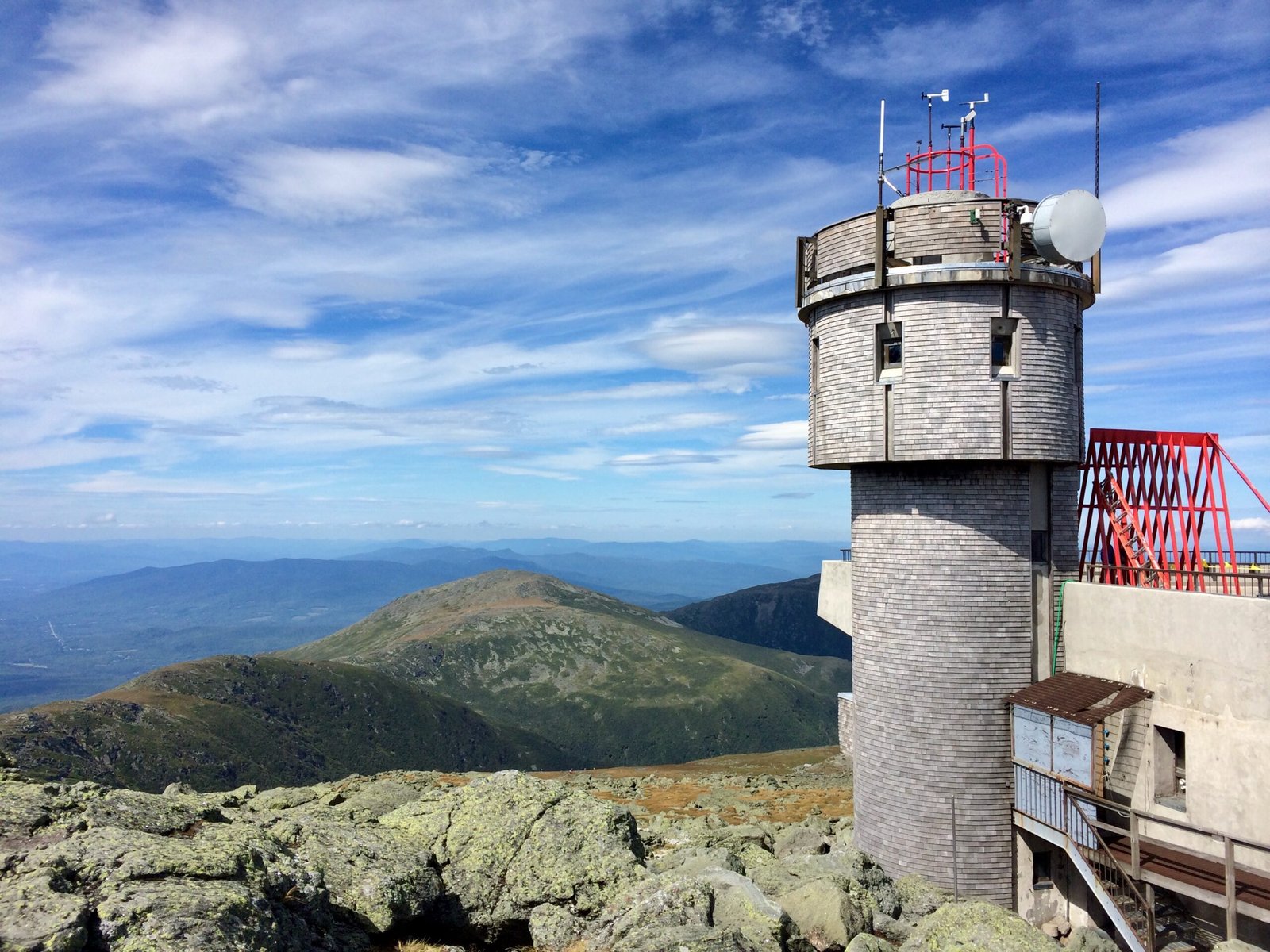
For hikers on the Appalachian Trail, Mount Washington NH is more than a physical barrier – it’s a rite of passage. This section of the trail, weaving through the Presidential Range, challenges even the most experienced trekkers with its exposed ridges, unpredictable weather, and demanding terrain. The mountain’s summit represents a high point both literally and emotionally, a place where individual journeys converge and where hikers reflect on the miles behind them and the challenges yet to come.

For me, the mountain offered something even deeper. It was a reminder of humanity’s smallness in the face of nature’s grandeur, a lesson in humility and resilience. Standing at the summit, surrounded by ancient rocks and winds that could strip trees bare, I felt connected to something far greater than myself. The mountain is a teacher, a guardian, and a storyteller, offering lessons in perseverance and a deeper appreciation for the natural world.
As I descended the mountain that day, riding the shuttle down its winding Auto Road, I carried with me a profound sense of gratitude – for the privilege of standing on that peak, for the stories the mountain has to tell, and for the promise that it will stand tall for generations to come. Mount Washington isn’t just a place to visit; it’s a place to understand, to respect, and to return to, time and time again.
11 More Science Travel Adventures
If you enjoyed exploring Mount Washington NH, check out these other science travel adventures:




